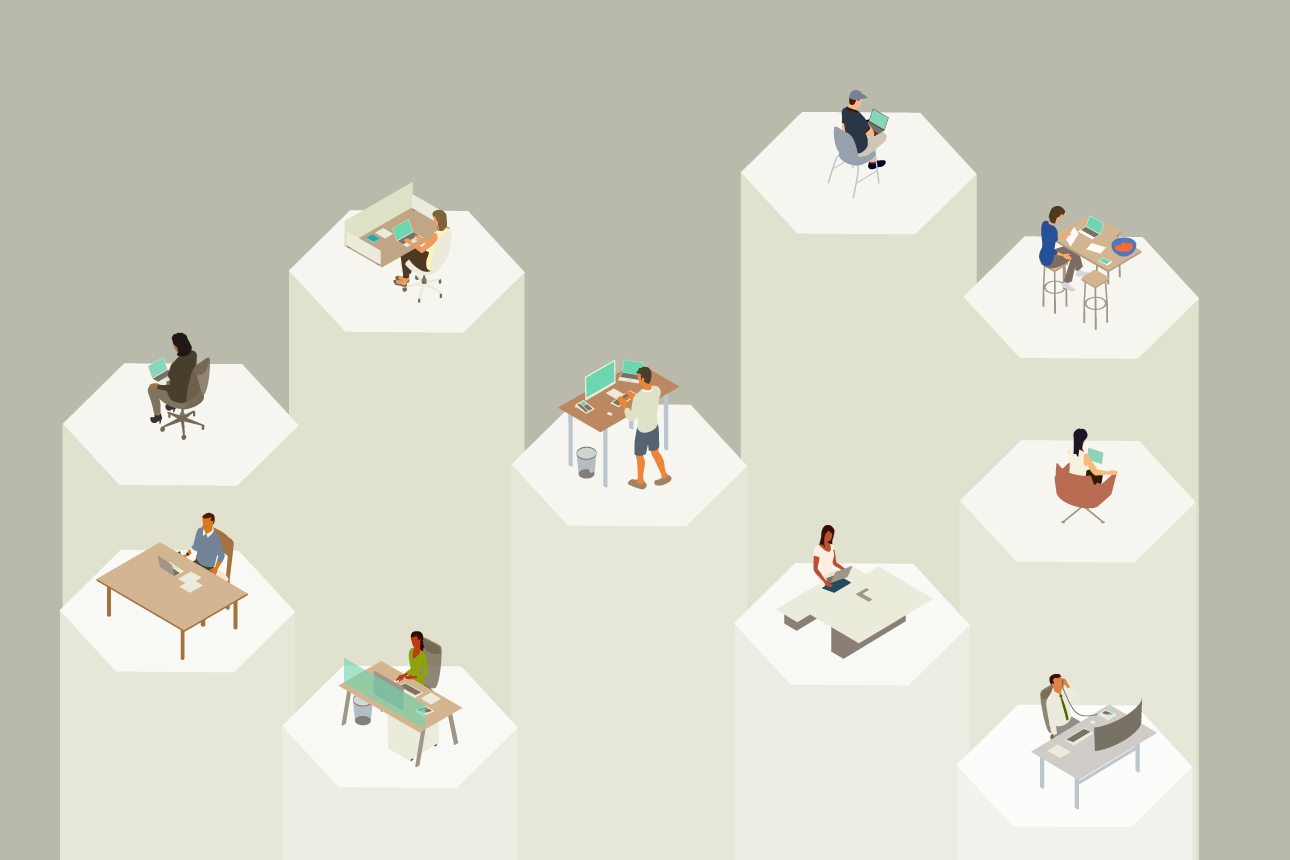Reimagining Office Density Can Ease Return-to-Work Resistance
Have companies been slowly squeezing employees out of the office?

Since COVID-19 vaccines have become widely available and restrictions have been lifted in many parts of the world, some employers have faced resistance over their return-to-office plans. Pitting remote work versus working in offices, the media’s framing of business-sector discussions continues to miss the mark by reducing workplace dynamics and return-to-office deadlines to a binary debate.
What we are witnessing is the culmination of something that has been building up for many years. The past 18 months have fast-tracked this decades-long trend that most businesses were unaware they were creating: an exodus from the office.
Increasing Densification — and Dissatisfaction
Back in 1985, a Harvard Business Review article created the template of what was to come with trends in office design: activity-based workplaces. This idea played out in the 1990s with more flexible workspaces — furniture for individual privacy and tables on wheels — to conform to team and individual needs. Over time, these individual personalized workspaces have evolved into fully open tables and benches with on-demand reservation systems. Absent individual offices, spaces intended for meetings have been in demand by people seeking moments of individual privacy rather than collaboration.
The fact is, long before the pandemic struck, many office environments were becoming increasingly harder to navigate due to higher densities, smaller workspaces, more noise, and less space per person. In fall 2019, respondents to the annual Gensler U.S. Workplace Survey reported dissatisfaction and frustration with typical office settings, a shift that had been amplifying for several years.
Commercial real estate companies CoStar and Cushman & Wakefield estimate that over the past two decades, office space allocated per employee shrank from 250 square feet per person to less than 135 square feet in markets like New York City, Seattle, and Washington, D.C. Intending to break down silos and bring people together through open-plan design and open-area lounge seating, many organizations also used this strategy to fit more people into the space, making the individual workspace increasingly more compact.
There is an unmistakable correlation between workspace and performance. The minimization of individual work areas can dehumanize the workplace and even decrease employees’ satisfaction and emotional and cognitive connections to the organization. A groundbreaking 2015 study published by the International Facility Management Association concluded that “perceiving your work space as satisfactory leads to greater job satisfaction.
